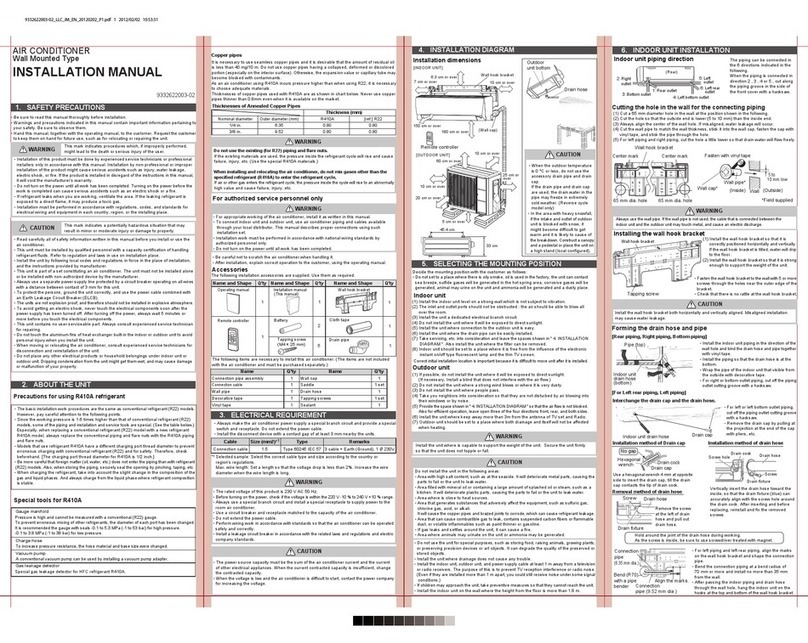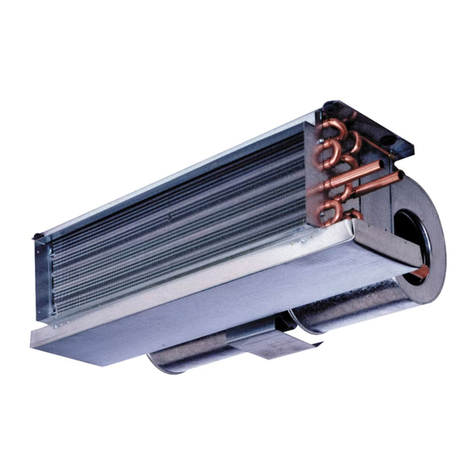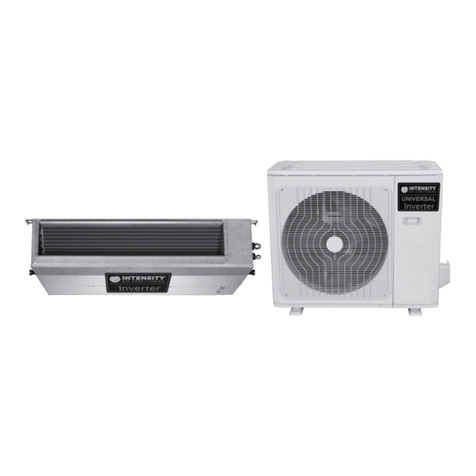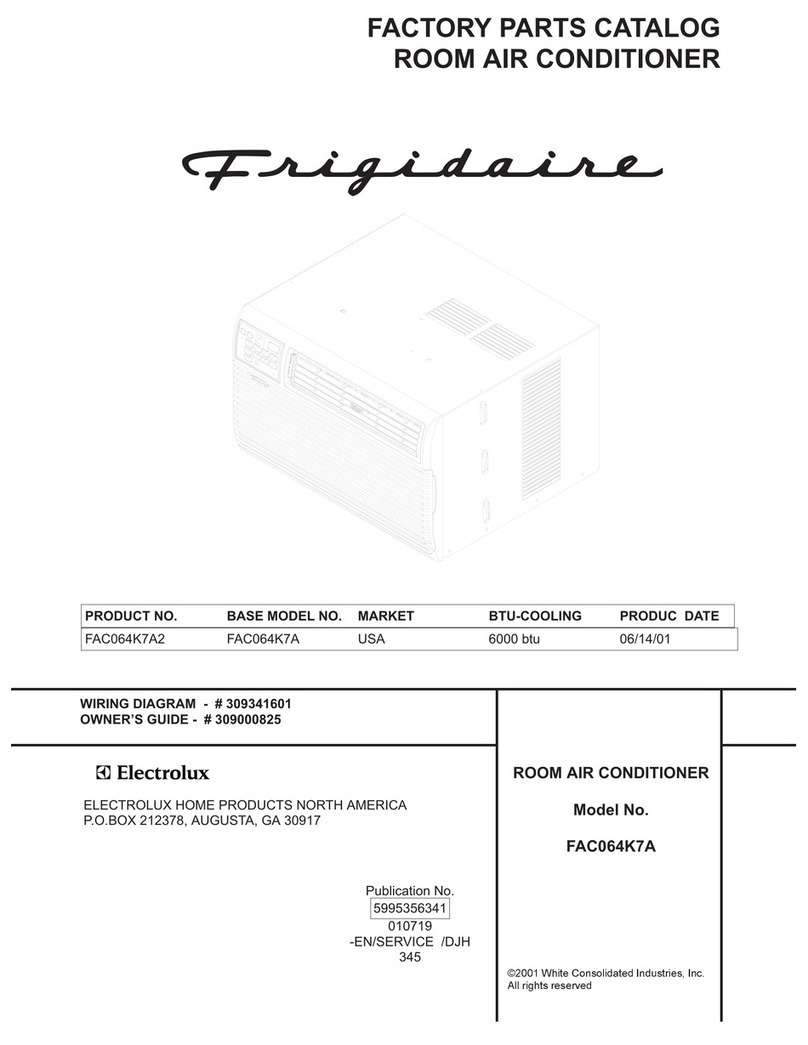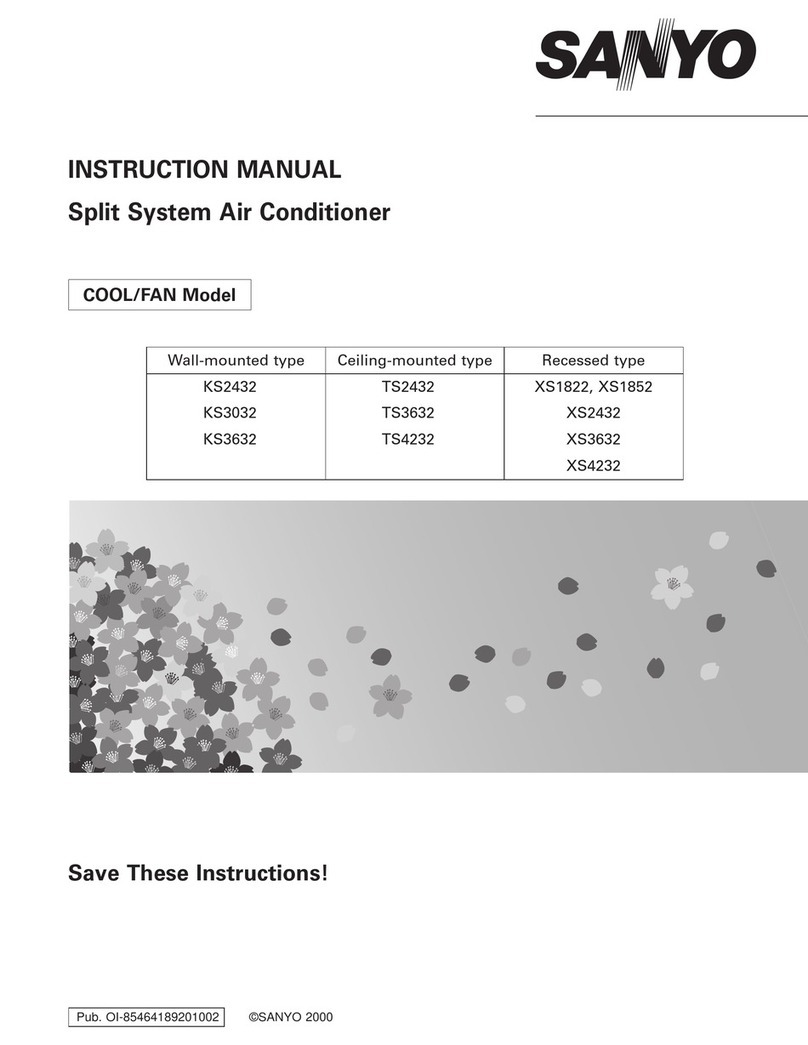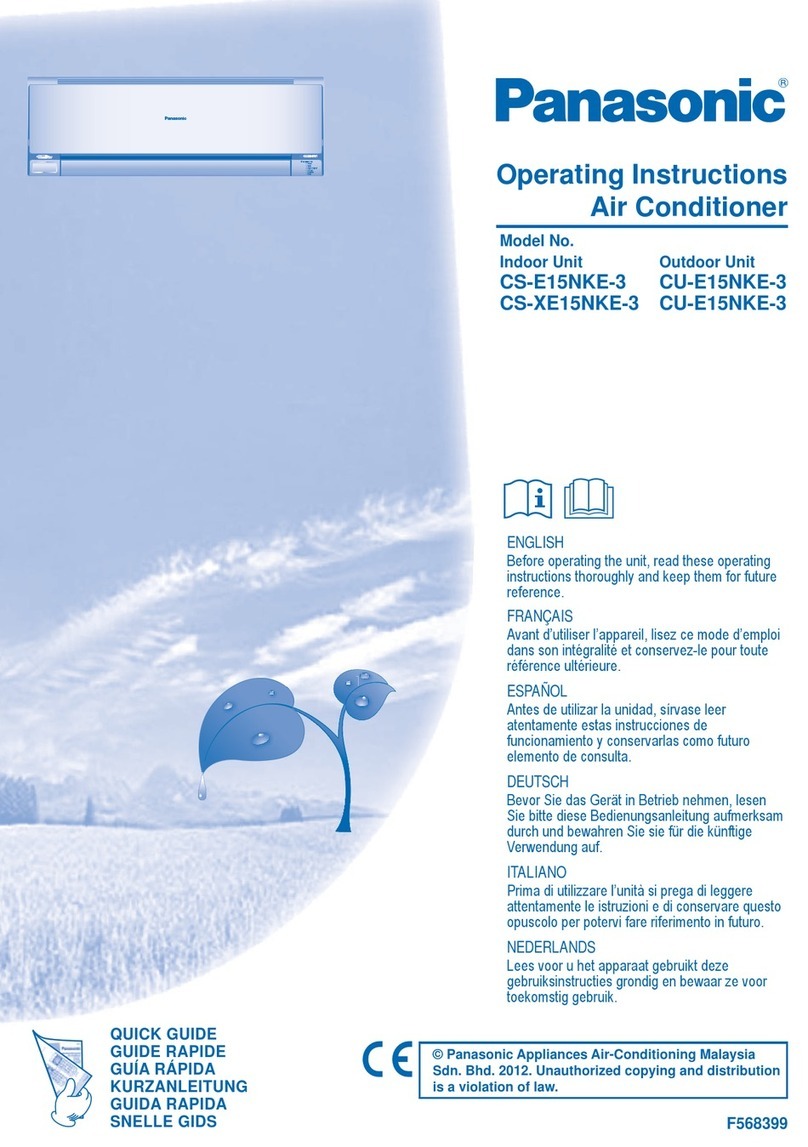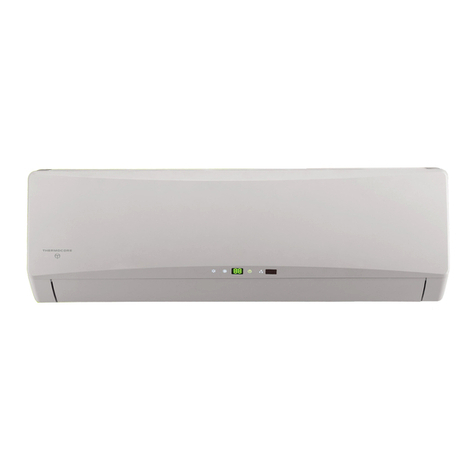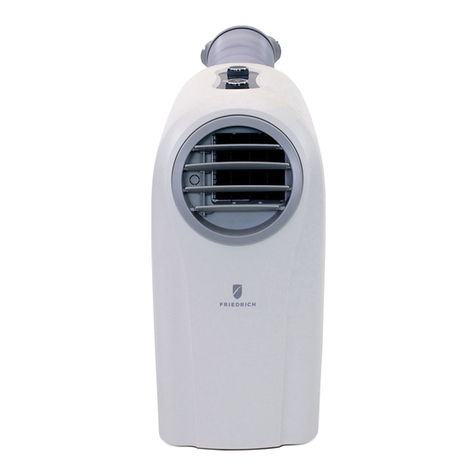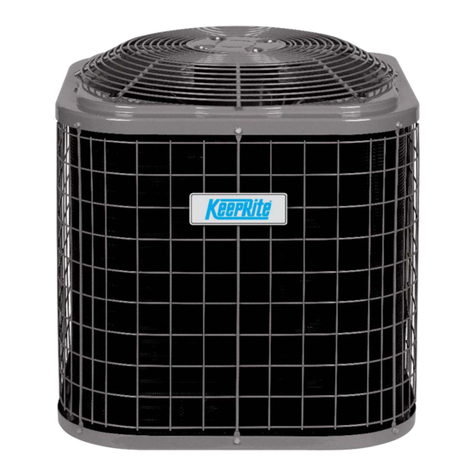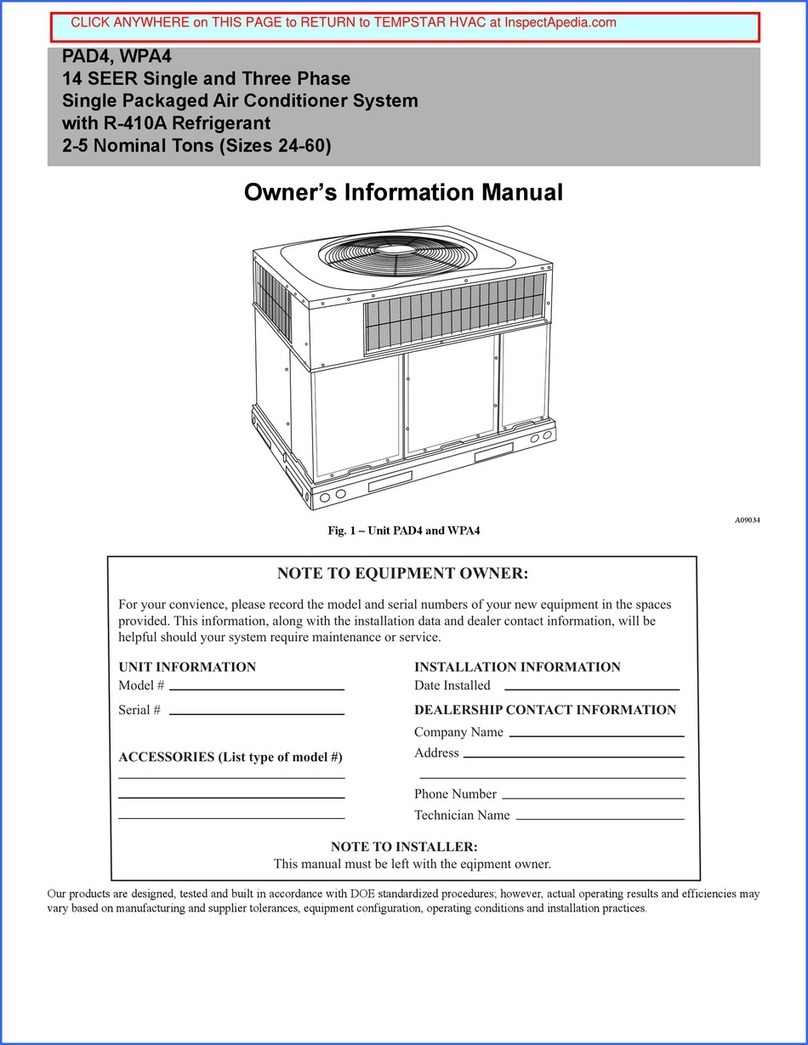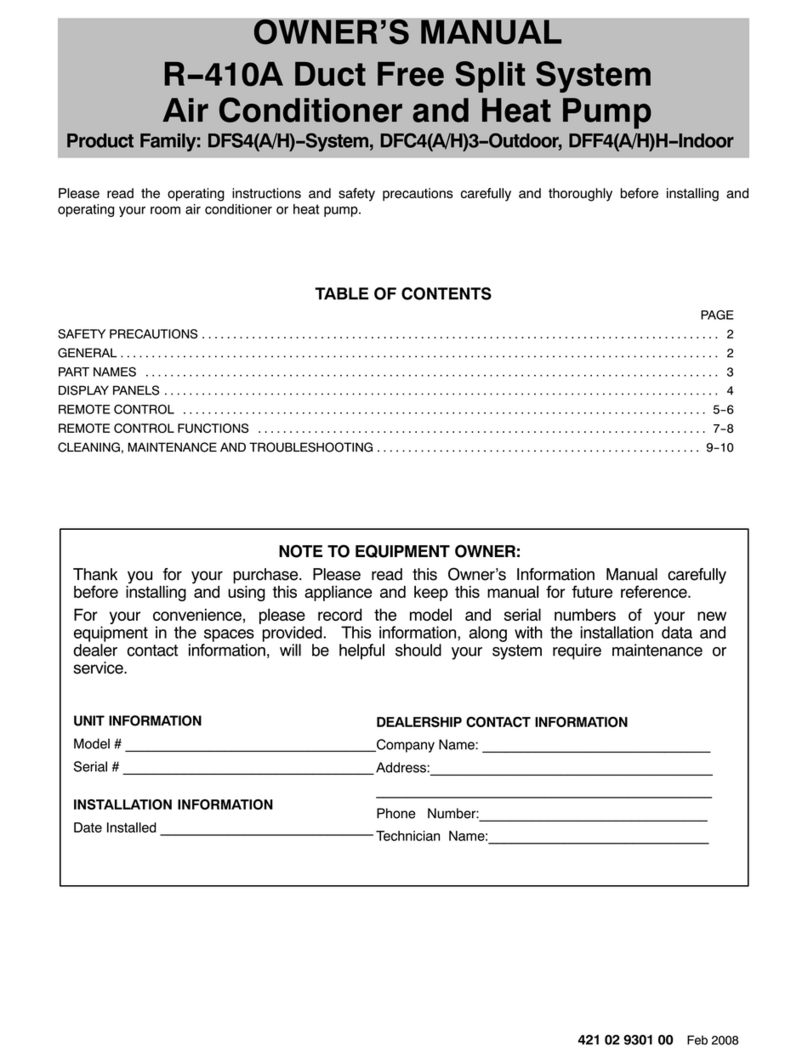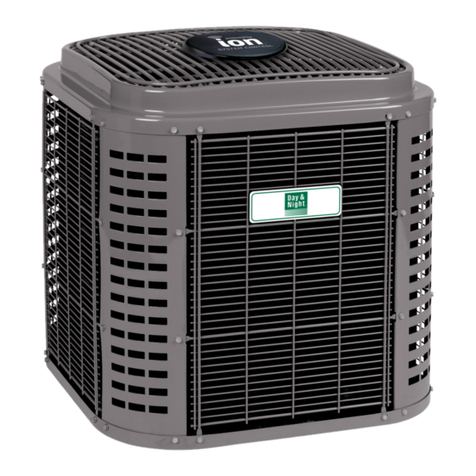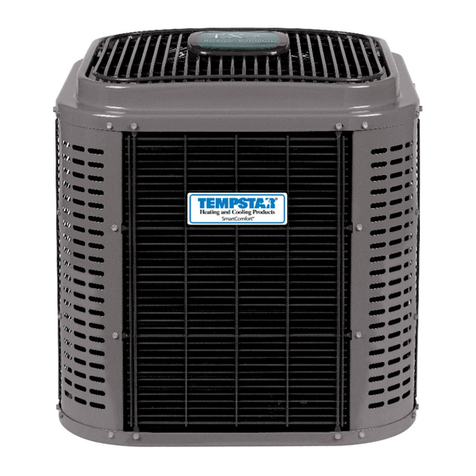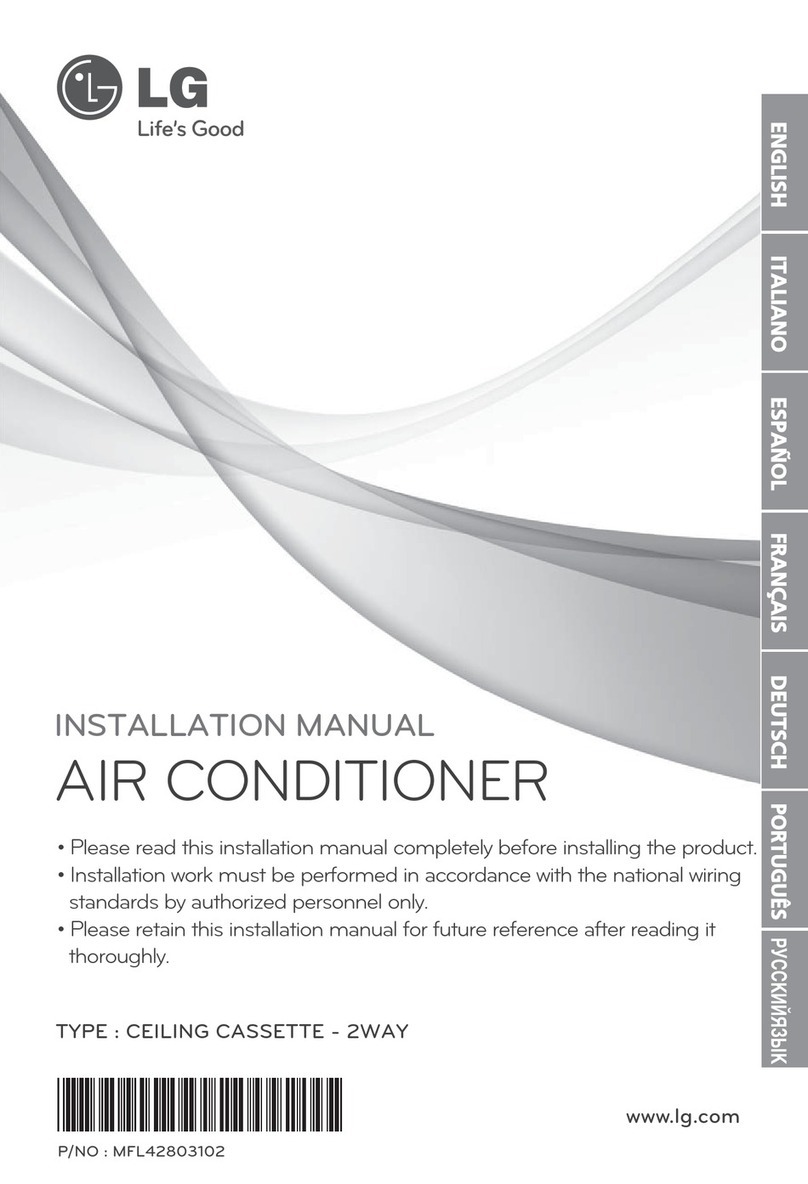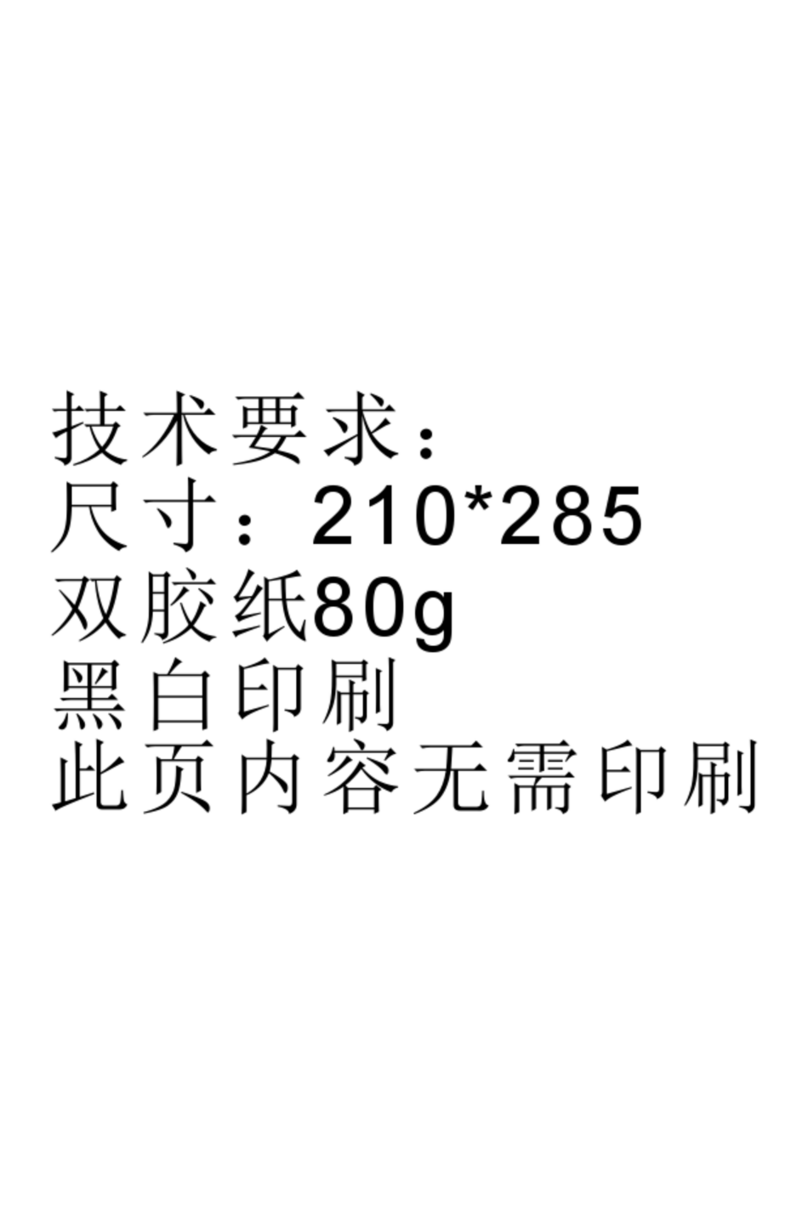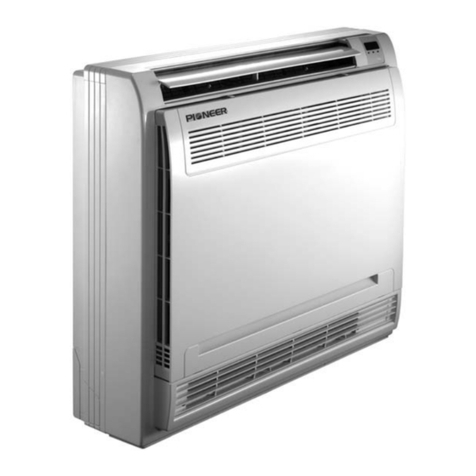
6484 01 3905 04
Specifications subject to change without notice.
UNIT OR PROPERTY DAMAGE HAZARD
Failure to follow this caution may result in property damage.
Take precautions to ensure Aluminum tubes do not come in
direct contact or allow for condensate run off with a
dissimilar metal. Dissimilar metals can cause galvanic
corrosion and possible premature failure.
CAUTION
!
The coil can be connected to outdoor units using field−supplied
tubing of refrigerant grade. Always evacuate tubing and reclaim
refrigerant when making connections or flaring tubing. Leak
check connections before insulating entire suction line.
See Table 1 for coil connection tube size.
1. Remove cabinet access door.
2. Remove rubber plugs, suction plug then liquid plug, from
coil stubs using a pulling and twisting motion. Hold coil
stubs steady to avoid bending or distorting.
3. Remove tubing plate with rubber grommets and slide plate
with grommets onto the refrigerant lines (field line−set),
away from braze joints.
4. Fit refrigerant lines into coil stubs. Wrap a heat sinking
material such as a wet cloth behind braze joints.
5. Wrap TXV and nearby tubing with a heat−sinking material
such as a wet cloth.
6. Use 1/2 psig Nitrogen purge in the suction and out the the
liquid line.
7. Braze using a Sil−Fos or Phos−copper alloy. Do not use
soft solder.
8. After brazing, allow joints to cool. Carefully remove TXV
bulb insulation and verify that the TXV bulb is securely
fastened with hose clamp. Tighten screw a half−turn past
hand tight with TXV bulb placed in the indentation with full
contact with the vapor line tube. Re−wrap TXV bulb with
insulation.
9. Leak check connections before insulating entire suction
line.
10. Slide tubing plate with rubber grommets over joints.
Position tubing at center of each grommet to ensure an air
seal around the tube. Reinstall cabinet door.
UNIT DAMAGE HAZARD
Failure to follow this caution may result in product
damage.
To avoid valve damage to the refrigerant control device
while brazing, valves must be wrapped with a
heat−sinking material such as a wet cloth.
CAUTION
!
REFRIGERANT METERING DEVICE
These Coils have a factory installed hard shut−off TXV
designed only for use with R−410A refrigerant. Use only with
outdoor units designed for R−410A.
NOTE: ALL TXV’S HAVE PRESET SUPERHEAT SETTINGS
AND ARE FIELD NON−ADJUSTABLE.
UNIT DAMAGE HAZARD
Failure to follow this caution may result in product
damage.
DO NOT BURY MORE THAN 36 IN. OF REFRIGERANT
TUBING IN GROUND. If any section of tubing is buried,
there must be a 6 in. vertical rise to the valve connections
on the outdoor unit. If more than the recommended length
is buried, refrigerant may migrate to cooler buried section
during extended periods of unit shutdown, causing
refrigerant slugging and possible compressor damage at
start−up.
CAUTION
!
CONDENSATE DRAIN LINE CONNECTION
PROPERTY DAMAGE HAZARD
Failure to follow this caution may result in property
damage.
When installing over a finished ceiling and/or living area,
install a field−fabricated secondary condensate pan under
the entire unit.
CAUTION
!
The coil is designed to dispose of accumulated water through
built−in condensate drain fittings. It is recommended that PVC
fittings be used on the condensate pan. Do not over−tighten.
Finger tighten plus 1−1/2 turns. Be sure to install plastic plug in
unused condensate drain fitting. Two 3/4 inch female threaded
pipe connections are provided in each coil condensate pan.
A trap is not necessary on the condensate line if on the supply
air side of furnace. For any modular air handler use
recommended minimum of 4” trap, is required. Consult local
codes for additional restrictions or precautions. If local codes
require a trap then the following guidelines are suggested to
assure proper drainage. Install a trap in condensate line of coil
as close to the coil as possible. Make trap at least 3 inches (76
mm) deep and no higher than the bottom of unit condensate
drain opening (See Figure 10). Pitch condensate line 1 inch
(25.4 mm) for every 10 ft. of length to an open drain or sump.
Make sure that the outlet of each trap is below its connection to
condensate pan to prevent condensate from overflowing the
drain pan. Prime all traps, test for leaks, and insulate traps and
lines if located above a living area.
EXPLOSION HAZARD
Failure to follow this warning could result
in personal injury or death.
Provide trap with air gap in drain line
when connecting to waste (sewer) line.
!WARNING
